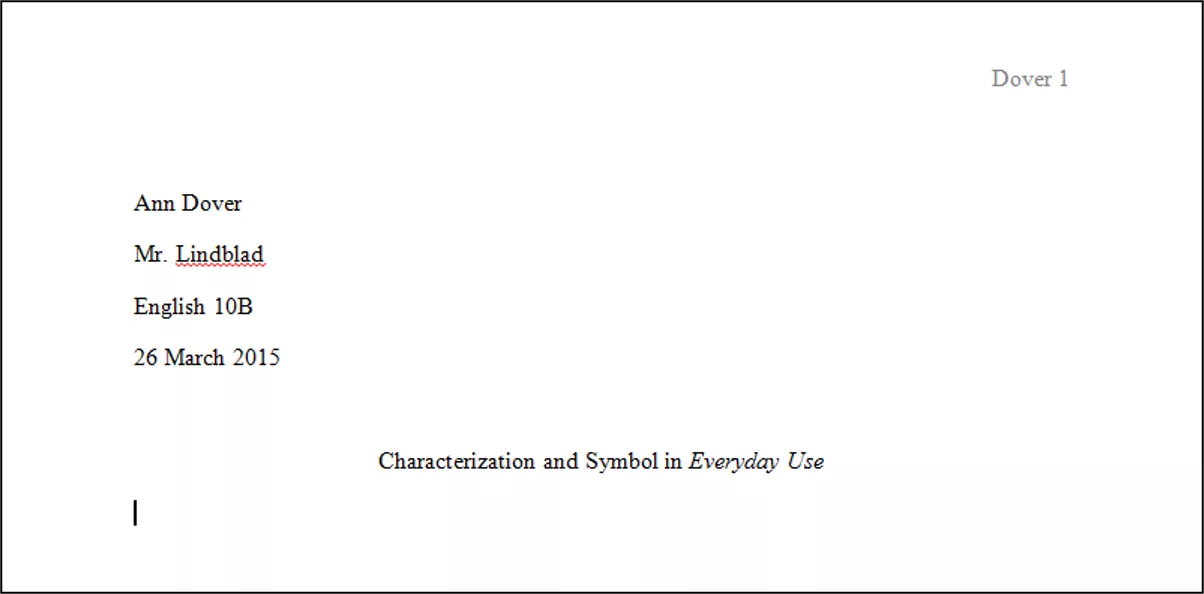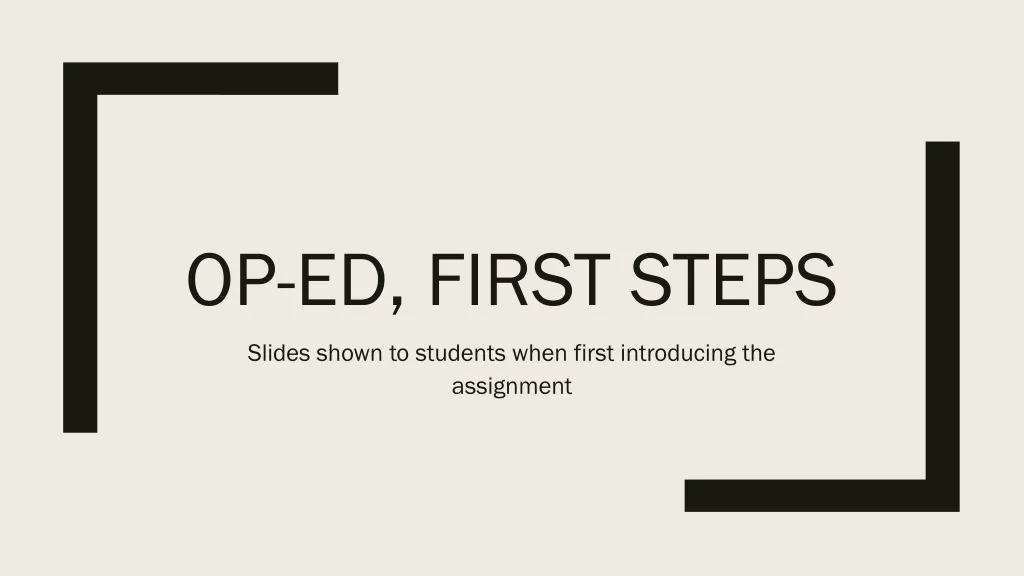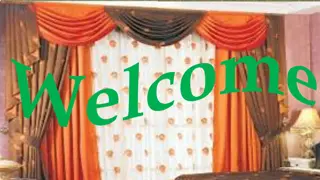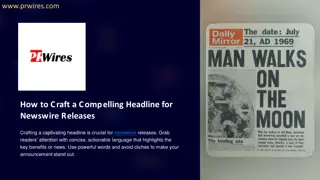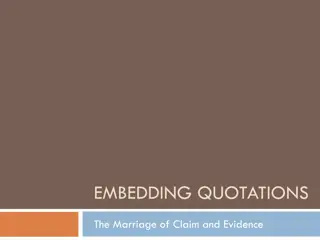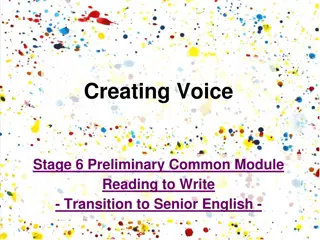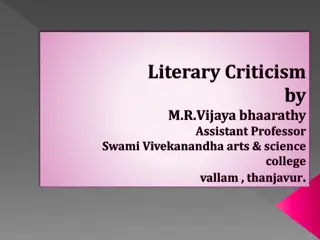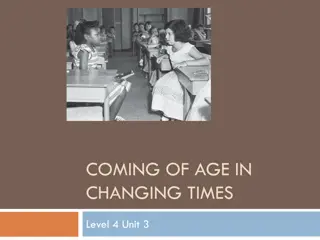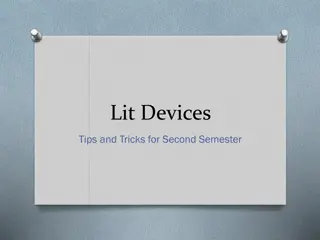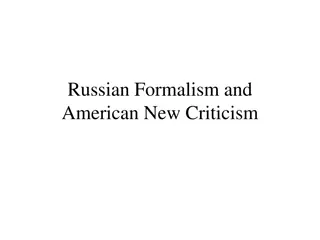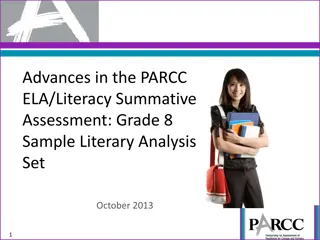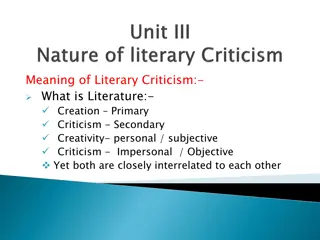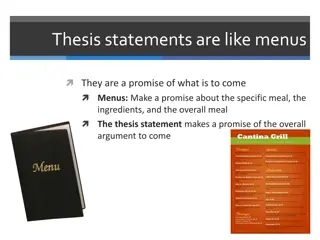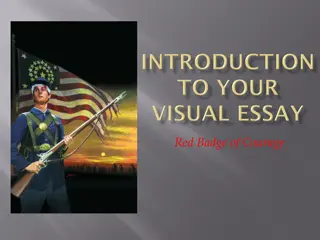Guide to Crafting a Compelling Literary Analysis
Explore the essential components of a literary analysis, from formatting tips to examples of engaging introductions, hooks, backgrounds, and theses. Understand the importance of capturing your reader's attention, providing context, and developing a strong thesis statement to support your analysis effectively.
Download Presentation

Please find below an Image/Link to download the presentation.
The content on the website is provided AS IS for your information and personal use only. It may not be sold, licensed, or shared on other websites without obtaining consent from the author.If you encounter any issues during the download, it is possible that the publisher has removed the file from their server.
You are allowed to download the files provided on this website for personal or commercial use, subject to the condition that they are used lawfully. All files are the property of their respective owners.
The content on the website is provided AS IS for your information and personal use only. It may not be sold, licensed, or shared on other websites without obtaining consent from the author.
E N D
Presentation Transcript
Literary Analysis Format and Examples
Header, Heading, and Title in MLA Format Everything should be in Times New Roman, 12 point font and double spaced. Your name Teacher s Name Course title Formatted Date Heading Title
Example Introduction with Hook, Background, and Thesis Yatzee! Checkmate! Hey, you sunk my battleship! It takes very few words to communicate the thrilling victories and agonizing defeats in these classic board games. Who doesn t have great memories of playing classic board games? Many of us grew up playing Life, Monopoly, Risk, and Checkers. Today, many people are discovering the joys of newer games like Ticket to Ride, Settlers of Catan, or Dominion. Today, the list of games that brings people together to socialize and strategize is nearly endless, and that means there s a game out there for everyone. There should be a board games club at Andover High School because it would be a wide variety of students together, board games help students learn creative and strategic thinking, and it would help Husky House remain a dedicated study hall.
Hook Essays and presentations must begin with a hook. You want to seize your readers attention with an amazingly creative opening. Hooks help you connect with your readers by making a strong first impression and showing them that you really do care about your topic and your writing. Here are several options to consider when creating a hook -Start with a personal anecdote or story (could be intriguing, humorous, or bizarre) -Inform your reader with an astonishing fact or statistic -Start with a powerful and relevant quote -Connect to the audience by connecting to a universal experience -Make it relevant by making it local (start with Minnesota, Andover, Andover High School) -Make it interesting and high interest for audience (teenagers, or )
Background The introduction should be a well- developed paragraph, so you should use the space between your creative hook and your straight-forward thesis statement to provide your reader with background information. Ask yourself: -Is there specific information that a general audience might need to be caught up to speed ? -Might the audience need some convincing that this an important/worthwhile topic? -Is there a way of illustrating some general information about topic through an anecdote or statistics (if you ve used another strategy in your hook)? The Acropolis in Greece. Zoomed out to show perspective.
Example Thesis from literary analysis In the play Romeo and Juliet William Shakespeare conveys his theme, the danger of acting hastily, through his characterization of Romeo and extensive use of foreshadowing. Title and Author, Theme, Literary Devices
Another Example Thesis from a literary analysis In the short story The Scarlet Ibis James Hurst portrays his theme, the cost of ambition, through the characterization of the narrator and the symbol of the Ibis. Title and Author, Theme, Literary Devices
An Example of MLA Citation This becomes apparent following his first encounter with Nika, when he thinks to himself, She was harmless. Mildly offensive, definitely intrusive, but no different than a thousand other spoiled teenage girls when it came to things like Indian identity or, say, the fact that she was sporting dyed red hair (Smith 22). These contentions were based solely off of one brief interaction with Nika. We find out these judgments were incorrect following the climax of the story when he realizes her hair was in fact authentic, crimson locks. (Author s Last Name & Page Number) = (Smith 22).
Thesis:In the playRomeo and JulietWilliam Shakespeare establishes his theme, the danger of acting hastily, through his characterization of Romeoand extensive use of foreshadowing. Romeo, more than any other character in the entire play, jumps into action without first considering possible consequences. For instance, Juliet is shocked when she discovers Romeo has risked his life by trespassing in the orchard outside of her balcony. She warns him, If any of my kinsman find thee here they will murder thee. But Romeo downplays the danger saying, I have night s cloak to hide me from their eyes (Shakespeare 25). Shakespeare s characterization of Romeo as a risk taker is a central part of the balcony scene. Romeo s daring actions add to the romance of the famous scene, but when he dismisses Juliet s level-headed warning so quickly it becomes obvious that Romeo s shortsightedness will become his fatal flaw. In the next scene, it is clear that Friar Lawrence does not believe that Romeo could have fallen in love so quickly, but he agrees to perform the wedding ceremony hoping that a marriage could end the feud between the Capulets and the Montagues. Romeo is so excited he trips over his own feet as he is running out the door. The older, wiser Friar warns, wisely and slow they stumble that run fast (Shakespeare 29). Shakespeare uses Romeo s speech and actions to characterize him as consistently reckless. The Friar s warning is the clearest indication that Shakespeare telling his audience to look before you leap and consider the possible consequences of rash action.
Literary Analysis Basic Outline Introduction A. Hook B. Background C. Thesis. Body Paragraph: How Characterization conveys theme A. Quote(Citation) Analysis of quote B. Paraphrase (Citation) Analysis of paraphrase III. Body Paragraph: How Symbol conveys theme A. Quote(Citation) Analysis of quote B. Summary (Citation) Analysis of summary IV. Conclusion





